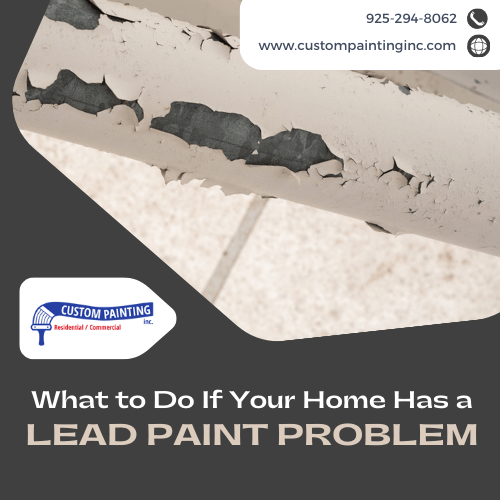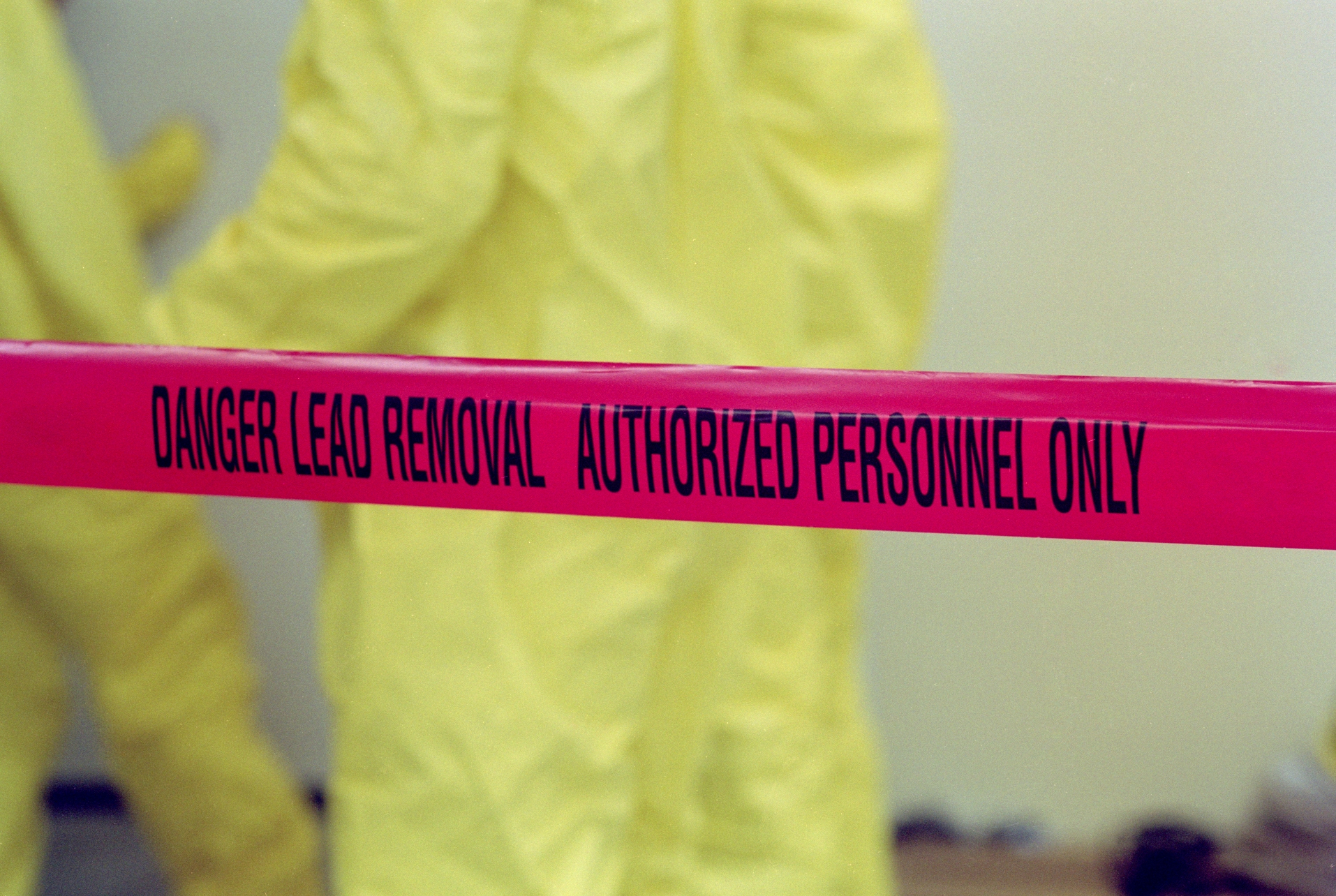When planning a house painting project, know how long your home has been standing, especially if it’s of a certain age. Homes built before 1978 are likely to contain lead-based paint. Suppose your home does contain lead-based paint; removing it is necessary before starting your repainting project.
Why lead-based paint removal by yourself is risky
However, don’t see lead-based paint removal as another DIY project. This is not generally recommended, as it poses significant health and safety risks to the person attempting to remove it and the home’s occupants.
The Environmental Protection Agency (EPA) has strict guidelines about who will remove lead paint from a home and how the removal should be done. Choosing to attempt removing lead paint by yourself, especially without professional experience, could result in lead exposure and possible health issues for you and your family.
EPA guidelines on lead-based paint
The EPA has specific guidelines about lead-based paint removal, primarily aimed at protecting public health and ensuring safe practices during renovations, repairs, and painting in homes or buildings that may contain lead-based paint.
Key points of EPA guidelines:
1. Renovation, Repair, and Painting (RRP) Rule
The EPA’s RRP Rule requires that any renovation, repair, or painting project disturbing lead-based paint in homes, childcare facilities, or schools built before 1978 must:
- Be performed by EPA-certified contractors or firms.
- Follow strict lead-safe work practices to prevent lead contamination.
2. Who can remove lead-based paint?
Certified professionals:
- Only individuals or companies certified under the EPA’s RRP Program can perform lead-based paint removal.
- Certification involves specialized training to handle lead safely and use proper techniques to minimize exposure.
DIY homeowners:
- Homeowners are not required to be certified if they perform lead-based paint removal on their own property.
- However, they are strongly advised to follow EPA safety guidelines due to the high risk of lead exposure.
3. Lead-safe work practices
To comply with EPA standards, certified professionals must:
- Contain the work area with plastic sheeting or other barriers to prevent dust and debris spread.
- Avoid hazardous practices, such as dry sanding, scraping, or using high-heat tools.
- Use specialized equipment like HEPA vacuums for cleanup.
- Conduct a thorough post-cleaning to ensure no lead dust remains.
4. Lead abatement vs. RRP work
The EPA distinguishes between:
Lead abatement:
- Designed to eliminate lead hazards permanently. It is highly regulated and can only be performed by certified lead abatement professionals trained under separate EPA or state programs.
Renovation, Repair, and Painting:
- Activities that temporarily disturb lead-based paint but are not aimed at permanently eliminating lead hazards.
5. State and local regulations
Many states have their own EPA-authorized lead programs, which may include additional requirements. Always check your state or local laws.
Resources for more information:
- Visit the EPA’s Lead Program Website: www.epa.gov/lead
- Call the National Lead Information Center (NLIC) at 1-800-424-LEAD.
- Look up a directory of certified RRP firms and contractors in your area on the EPA website.
Adhering to these guidelines ensures lead removal is done safely and in compliance with legal standards.
How to tell if a home has lead-based paint
Determining whether your home has lead-based paint is essential for ensuring safety, especially in homes built before 1978, when the use of lead-based paint was banned in residential construction in the U.S. If you suspect that lead-based paint is present in your home, especially if it’s old, consider the following steps:
1. Check the age of your home
- Homes built before 1978 are likely to have lead-based paint.
- Homes built before 1960 have an even higher likelihood, as lead paint was commonly used at the time.
2. Look for visual signs
While visual inspection alone isn’t definitive, lead-based paint often shows specific characteristics:
- Peeling, chipping, or flaking paint: Usually around doors, windows, baseboards, and exterior surfaces.
- Dust or residue: If disturbed, lead paint can create fine dust, particularly around friction surfaces like window sashes and door frames.
3. Use DIY lead test kits
- Available at most hardware stores or online, these kits allow you to test painted surfaces for lead.
- How they work:
- Apply a swab or solution from the kit to a painted area.
- If the solution changes color (often pink or red), lead may be present.
- Accuracy: DIY kits can provide an initial indication but are not as reliable as professional testing.
4. Hire a certified lead Inspector or risk assessor
Professional testing is the most reliable method and includes:
- X-Ray fluorescence (XRF) testing:
- Uses a handheld device to analyze layers of paint without damaging surfaces.
- Provides immediate results.
- Paint chip sampling:
- Involves removing a small paint sample and sending it to an EPA-certified laboratory for analysis.
- Results are highly accurate but may damage the surface.
5. Contact local health departments
- Many local or state health departments offer resources, advice, or even testing services for homes suspected of having lead-based paint.
6. Check past records
- Review records if you purchased the home, as sellers are required to disclose any known presence of lead-based paint under the Residential Lead-Based Paint Hazard Reduction Act.
- If renting, landlords must provide a Lead-Based Paint Disclosure if the building was constructed before 1978.
What to do if lead is found?
Once you confirm that lead-based paint is present in your home, address it correctly and promptly to prevent lead exposure and ensure your and your family’s safety. Here’s what to do:
1. Assess the condition of the paint
Intact paint:
- If the lead-based paint is in good condition (not chipping, peeling, or cracking) and is in a low-risk area (not on frequently touched surfaces), it may be left undisturbed. If you decide to sell your home in the future, you will want to disclose the presence of lead-based paint so potential buyers are aware.
Deteriorating paint:
- If the paint is peeling, chipping, or flaking, it poses a health hazard and must be addressed immediately.
2. Avoid disturbing the paint
- Do not sand, scrape, or heat lead-based paint, which releases toxic dust and fumes.
- Seal off affected areas to prevent lead dust from spreading, especially if deterioration is significant.
3. Implement safety measures
Limit access:
- Restrict access to areas with deteriorating lead-based paint, especially for children and pregnant women.
Clean dust regularly:
- Wet-clean floors, window sills, and other surfaces where lead dust may accumulate.
Use HEPA filters:
- Regularly vacuum using a vacuum cleaner with a HEPA filter to trap lead particles.
4. Address the hazard
Encapsulation:
Apply a special encapsulating paint designed to seal in lead-based paint. This is a cost-effective and non-invasive method for surfaces in good condition. Follow the manufacturer’s instructions to ensure a proper adhesion and long-lasting bond.
Enclosure:
Cover the lead-painted area with new materials, such as drywall, paneling, or cladding, to create a barrier. Doing so will keep access to paint to a minimum. Again, disclose the presence of lead-based paint to potential buyers if you decide to sell your home.
Removal:
Safely remove the lead-based paint using chemical strippers or other EPA-approved methods. This should only be done by trained professionals.
Replacement:
Replace affected components, such as doors, windows, or trim, with new materials. You can do this yourself, and it is also less expensive and risky than trying to remove the paint.
5. Hire a certified professional
For significant lead hazards, hire EPA-certified contractors who follow lead-safe work practices under the Renovation, Repair, and Painting (RRP) Rule:
- These professionals are trained to contain, minimize, and clean up lead dust effectively.
6. Conduct a clearance test
After any remediation work, ensure the area is safe by having a clearance test performed by a lead inspector or risk assessor to confirm no hazardous lead levels remain.
7. Maintain lead-safe practices
- Monitor condition: Regularly inspect painted surfaces for signs of deterioration.
- Clean and maintain: Wet-clean surfaces regularly to reduce lead dust buildup.
- Use barriers: Install window coverings or liners to reduce friction and dust from lead-painted windows or sashes.
8. Stay informed
- Educate yourself and your household about lead risks and safe practices.
- Provide resources to family members or tenants, if applicable, about lead-safe practices.
Who to contact for help:
- National Lead Information Center (NLIC): 1-800-424-LEAD
- Local Health Department: Many provide support or guidance.
- EPA Resources: Visit www.epa.gov/lead for more information and resources.
Conclusion
Your old home holds nostalgia and fond memories. However, it needs a new paint job to refresh its appearance while maintaining its integrity. Before re-painting your home, though, you have to get rid of lead-based paint first. Addressing lead-based paint carefully and promptly will protect your family’s health and ensure compliance with regulations.
Call to action
Local paint contractors can handle lead-based paint removal, but only if they are certified under the EPA’s RRP rule or a similar state-authorized lead-safe program. Custom Painting, Inc.’s professional crew has the necessary training to manage lead-based paint safely and minimize health risks. If you live in or around the Concord area, call us at 925-294-8062 or message us here for a free estimate. Our team will make your home not only beautiful but also safe for you and your family.



